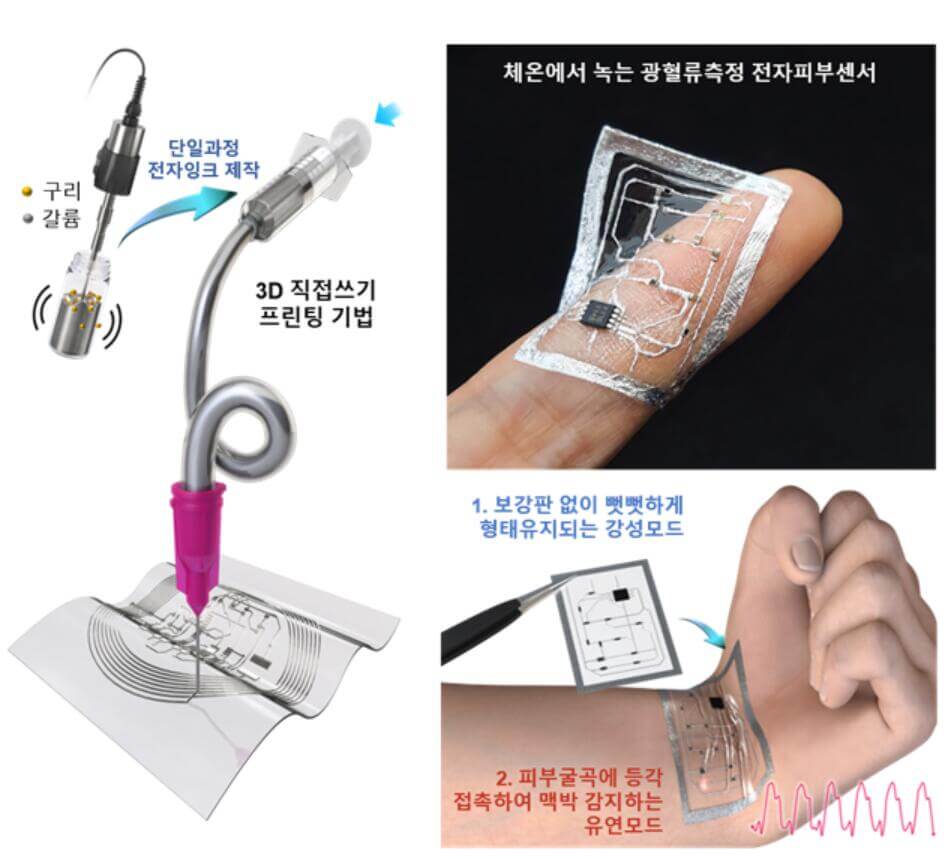Researchers at KAIST have achieved a significant milestone in bioelectronics with the development of a novel liquid metal-based electronic ink, the website e-patentnews reported. Led by Professor Jaewoong Jeong from the Department of Electrical and Electronic Engineering and Professor Steve Park from the Department of Materials Science and Engineering, the team has created an ink that allows for high-resolution printing using a direct ink writing method through small nozzles. What sets this innovation apart is its unique property of softening at body temperature, paving the way for comfortable and adaptable bioelectronic devices.
In recent years, there has been a growing interest in wearable and implantable bio-devices and soft robotics, aimed at enhancing health monitoring and treatment capabilities. Traditional medical devices, due to their rigid nature, often cause discomfort or inflammation when attached to the skin or inserted into tissues. The newly developed electronic ink addresses these issues by transitioning from a rigid state at room temperature to a soft, flexible state at body temperature. This flexibility allows the devices to seamlessly integrate with human skin and tissues, minimizing discomfort and enabling precise handling.
The core material of this innovative ink is gallium, a metal known for its low melting point (29.76°C), which allows it to easily transition between solid and liquid states. Despite its metal base, gallium is non-toxic and exhibits excellent electrical conductivity. Overcoming challenges such as high surface tension and low viscosity, the researchers have successfully formulated an electronic ink capable of high-resolution printing, making it suitable for creating intricate electronic circuits.
The implications of this technology are vast. The research team has already demonstrated its capabilities by developing ultra-thin optical blood flow sensors and wireless optoelectronic implant devices. These devices are rigid and easy to handle at room temperature but become soft and pliable upon contact with the body’s natural heat (~36.7°C). This characteristic ensures stability during operation and facilitates easy removal after use, promising reusable and versatile applications in medical and robotic fields.
Professor Jeong Jae-woong emphasized the transformative potential of this electronic ink, stating, “This technology opens up new possibilities in multipurpose electronic devices, sensors, and robotics by overcoming the limitations of existing rigid electronic devices.”
The study, co-authored by undergraduate student Do-ah Kwon and doctoral student Si-mok Lee from the Departments of Materials Science and Engineering and Electrical and Electronic Engineering, respectively, was recently published in the prestigious international journal Science Advances. The paper titled “Body-temperature Softening Electronic Ink for Additive Manufacturing of Transformative Bioelectronics via Direct Writing” marks a significant step forward in the field of bioelectronics and additive manufacturing.
With a keen interest in tech, I make it a point to keep myself updated on the latest developments in technology and gadgets. That includes smartphones or tablet devices but stretches to even AI and self-driven automobiles, the latter being my latest fad. Besides writing, I like watching videos, reading, listening to music, or experimenting with different recipes. The motion picture is another aspect that interests me a lot, and I'll likely make a film sometime in the future.

